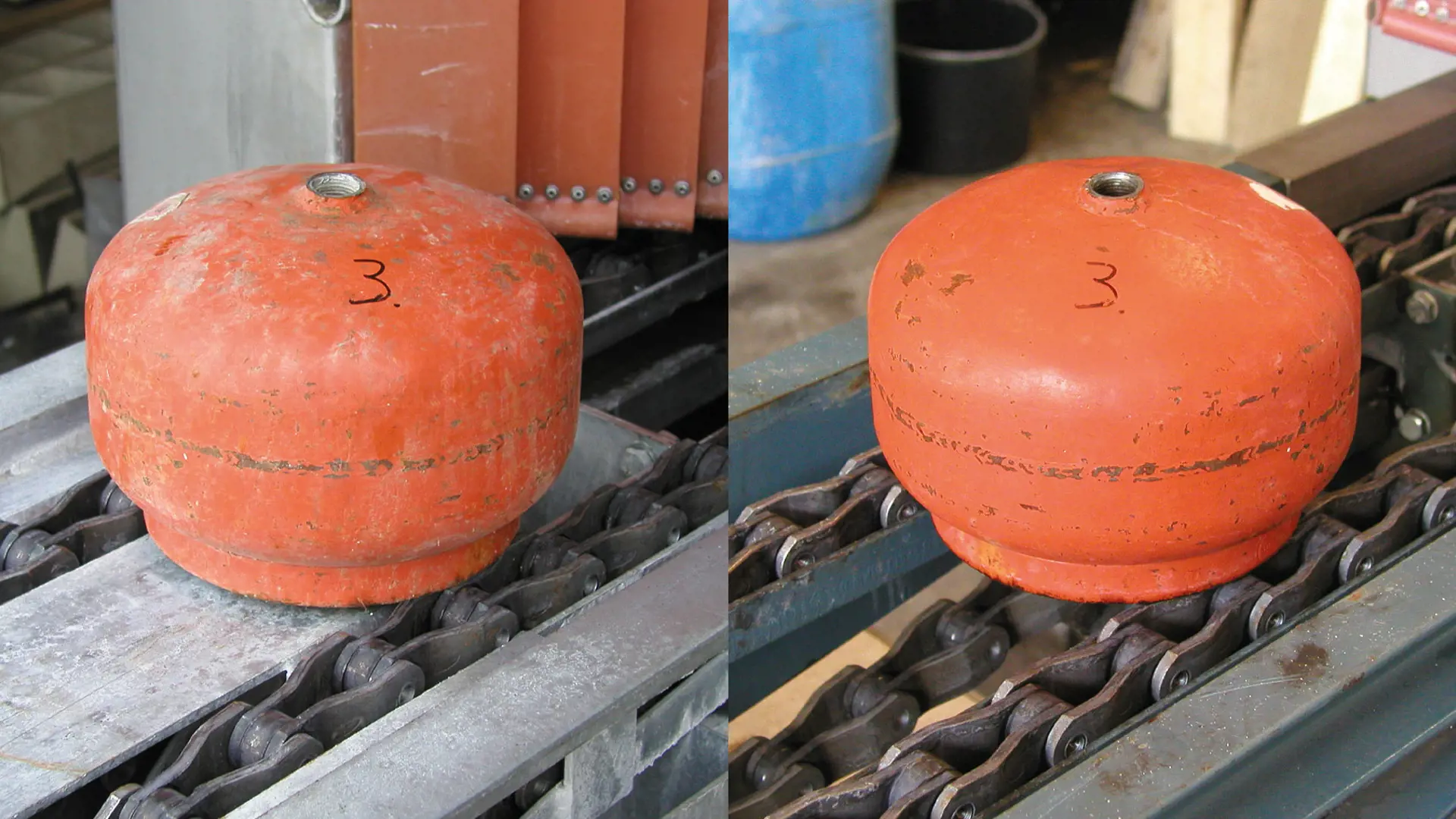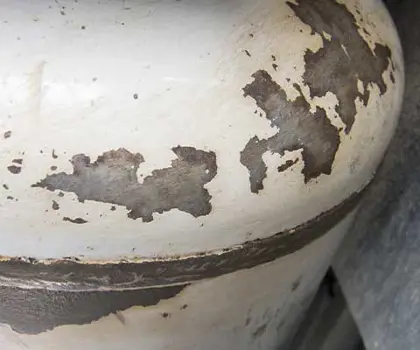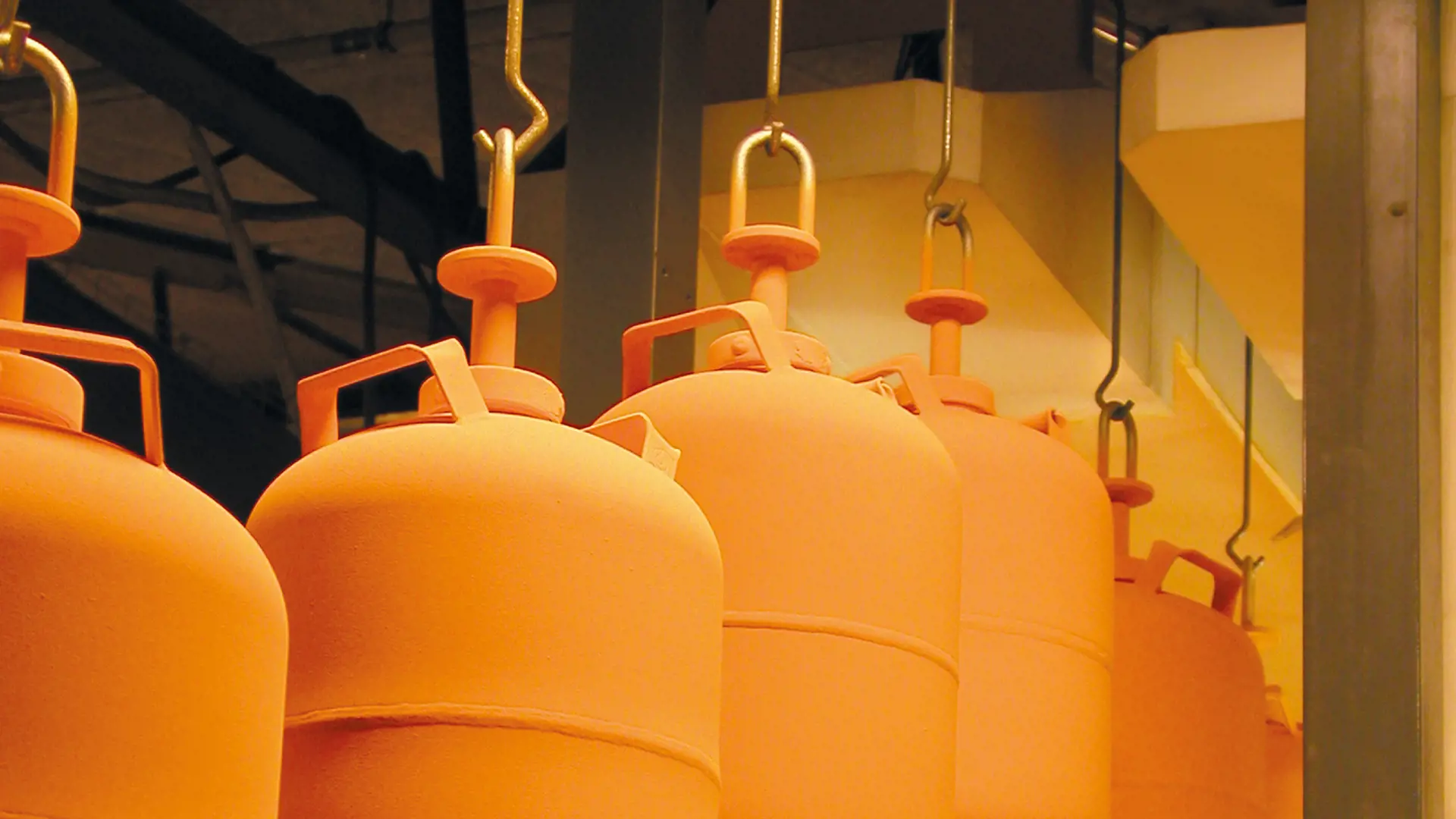Knowledge Centre
When it’s time to replace an empty cylinder at home, most of us instinctively reach for the one that looks new and well-maintained. This preference is not just about aesthetics; it’s also about perceived safety, which is a valid concern. The brand value of a properly reconditioned cylinder is significant. Moreover, ensuring the upkeep of your cylinders is crucial for safety. So, if your cylinders need freshening up, perhaps it’s time to consider the undeniable benefits of cylinder reconditioning.

Maintaining your cylinders offers a significant amount of brand value, and the safety gained from the reconditioning procedures is paramount to your customers – and thus to your brand. This article aims to list some of the potential hazards of cylinders that require their repair. A lack of reconditioning damaged cylinders can, worst case scenario, compromise safety – and naturally, safety comes before image. The need to secure the safety of the consumer is the reason why cylinders are subject to inspection every 5, 10 or 15 years – depending on the national legislation.
If you have old, retired, cylinders lying around, reconditioning them can be a great way of bringing them back to life and utilising an otherwise unused resource. In fact, reconditioning makes it possible to register all newly reconditioned cylinders in a database, which permits going back in time and checking cylinder data, e.g. tracing a certain cylinder that has caused an error to determine why the error arose to proactively avoid it from reoccurring. This is especially beneficial in relation to documentation towards the authorities.

Also, reconditioning means fewer mistakes and thus stops in the filling hall, which increases capacity, which again increases bottom line figures. It makes perfect sense economically to recondition since well-kept cylinders have a life span of up to an astounding 50 years – putting off the acquisition of new cylinders potentially for decades.
In terms of image, reconditioning can positively position your brand among competitors as mentioned in the introductory remarks: New or new-looking cylinders are far more appealing to the consumer than dented, peeled off cylinders. Moreover, the cylinders may be used as an ad space, e.g. to guide the user by marking the cylinder with instructions for usage, increasing safety as well as brand value – a win win.
According to The World Liquid Gas Association, all cylinders must be inspected prior to filling to make sure they uphold to the required safety standards. When inspecting your cylinders, there are several factors you should be aware of. If you encounter any of these red flags, you should immediately act before proceeding with your filling operations.
These include:
- Leaking cylinders – they must be de-pressurised to atmospheric pressure and gas freed as soon as is practicable.
- Cylinders due for periodic inspection and testing.
Defective/faulty cylinders, e.g. serious dents, bulges, gouges, fire damaged, damaged valves, valves with missing consumer seal, etc. - Cylinders with partial or worn markings/finish.
- Cylinders containing air, e.g. new/reconditioned cylinders.
- Cylinders owned by third parties where there is no agreement to fill or maintain them. These should be returned to the owner/filler.
If you are still not convinced, here are the five most important reasons why you should consider reconditioning your cylinders:

#1 DENTS OR BULGES IN THE CYLINDER
Cylinders with dents or bulges are at risk of exploding because of a thinning of the steel. Hence, regular and planned cylinder inspection of dents is essential. Repairing and straightening of cylinders with ‘soft’ bulges is often the profitable choice instead of simply scrapping the cylinder. If dents have caused a thinning of the steel and the cylinder is exposed to high temperatures, the risk of an explosion is imminent – a risk that only increases if the cylinder is overfilled as well.

#2 INCORRECTLY MARKED CYLINDERS
If a cylinder is marked incorrectly, the operator will most likely either under- or overfill the cylinder as the weighing unit will not display the correct amount of gas filled. Underfilling does not pose a danger, however, but the customer will not get value for money. Overfilling, on the other hand, can be very dangerous. When the liquid gas cannot expand due to overfilling, the pressure inside the cylinder will rise and the cylinder is at risk of exploding. Add to that a rise in temperature and a dangerous situation can occur. The pressure rises by an additional 7-8 bar for every one degree rise in temperature.

#3 LEAKAGE FROM THE CYLINDER
The standard required leak test of the valve is performed in the filling hall, however, the cylinder is also leak tested at the reconditioning plant. After welding the cylinder, small pin holes that can cause tiny leakages, may arise in the welding seams. Moreover, when a new valve is mounted, the tightness of the compound used for sealing is tested. Leaking gas from the valve may prompt a potentially dangerous situation and the valve must either be repaired or replaced.

#4 CORROSION
When cylinders with peeling paint are exposed to water, they can corrode, leading to leaks. This can create a dangerous situation if there is an ignition, as it could result in a small explosion due to the pressure increase. In rare instances, a leaking cylinder might also cause suffocation. If enough gas escapes, it can reduce the oxygen concentration in the air to levels that are unsafe.

#5 PAINTING
Regarding paint, it is worthwhile to repaint new cylinders, even if it seems unnecessary to shot blast and repaint them. Many new cylinders come with a wet paint coating that is not very durable. Replacing this with a powder coating can extend the surface durability and keep the cylinders looking new for longer. And as mentioned, looks do matter when it comes to your cylinders.

#6 BENDED SHROUD AND FOOT RINGS
Years of wear and tear, transportation and handling leave their mark on the shroud and foot ring on a cylinder - they bend and become crooked. Obviously, a cylinder with a straightened foot ring or shroud has a higher market value, and is easier to stack, move and process (e.g. in a filling line). By straightening, as opposed to changing the shroud and/or foot ring, you avoid having to perform a more extensive replacement process.
Clearly, there are many reasons to maintain your cylinders. The operative one is safety, but there are also financial reasons as well as those to do with image.

Scrapping Cylinders
Sometimes, cylinders are beyond repair. When cylinders are identified as being outside acceptable limits or too costly to repair compared to buying new ones, they should be scrapped. Before scrapping, these cylinders must be thoroughly gas-freed and rendered completely unusable to prevent any further use.
In some areas, scrapped cylinders have unfortunately been recycled and reintroduced into the market, leading to unsafe refills. This poses significant risks to both filling plant operators and end users. Therefore, it is crucial to ensure that scrapped cylinders are permanently disregarded so they cannot be reused. And to maintain control and traceability, the serial numbers of all scrapped cylinders should be recorded, along with the reasons for scrapping and details of the buyer. This data is valuable for analysing root causes and implementing corrective actions to reduce the rate of cylinder scrapping. It also helps track any scrapped cylinders that might reappear in the plant.
If you need further information don’t hesitate to contact us. We also refer to the The World Liquid Gas Association’s ‘Guide to Good Industry Practices for LP Gas Cylinder Management’ for more information about reconditioning.
Download the e-book
Download the e-book and equip yourself with all the knowledge you need to keep your cylinders in pristine condition.
Click below to get your free copy and put these insights to work!




